Crevice Garden
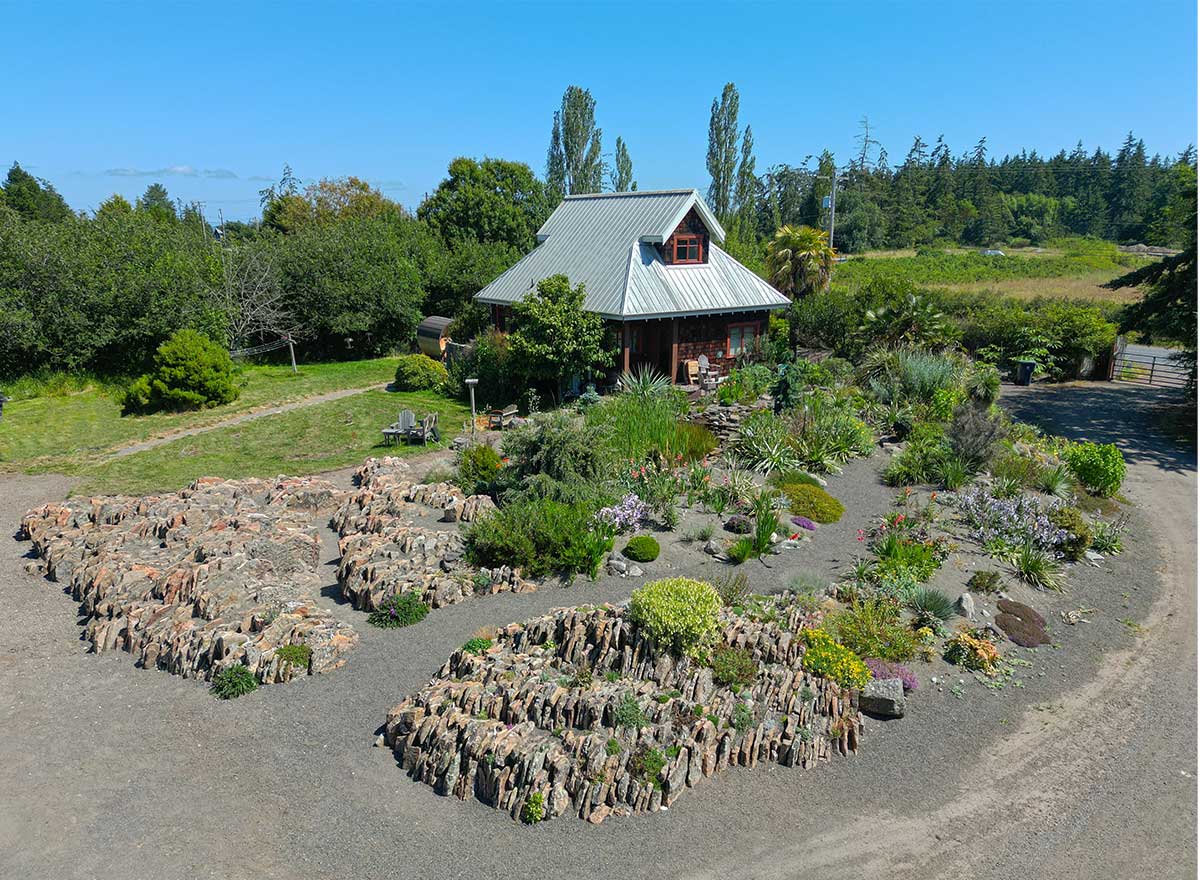 April is some serious green here at FRBC with plants in motion everywhere we look, and no doubt your own garden is equally unrestrained. Setting aside ethics and everything else which we totally agree with, we can hardly wait for seasonal human cloning to become a matter of course so that we can have a dozen of each us doing what needs done in April and May. If it weren’t for our incredible volunteer crew pitching in, that cloned dozen would be in multiples.
April is some serious green here at FRBC with plants in motion everywhere we look, and no doubt your own garden is equally unrestrained. Setting aside ethics and everything else which we totally agree with, we can hardly wait for seasonal human cloning to become a matter of course so that we can have a dozen of each us doing what needs done in April and May. If it weren’t for our incredible volunteer crew pitching in, that cloned dozen would be in multiples.
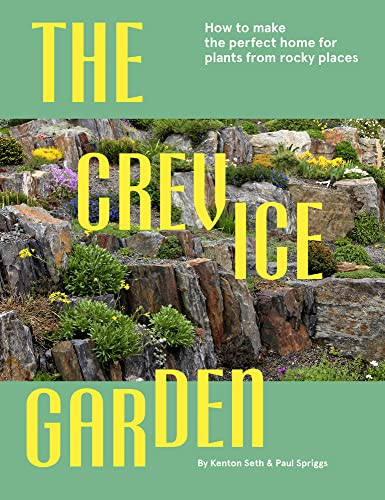 A major FRBC project that has been long-delayed by the pandemic has been accomplished. Crevice garden maestros Kenton Seth, Paul Spriggs, Ty Danylchuk, and Chris Dixon arrived two weeks ago to continue the lyrical story in stone that Kenton and Paul told in building the initial crevice garden three years ago. The original installation was a paean to stone artistry – without a single plant in it, we could have died happy. This would have been enough for just about anyone. After all, this installation is featured in Kenton and Paul’s new book on Crevice Gardens coming to the US market in August.
A major FRBC project that has been long-delayed by the pandemic has been accomplished. Crevice garden maestros Kenton Seth, Paul Spriggs, Ty Danylchuk, and Chris Dixon arrived two weeks ago to continue the lyrical story in stone that Kenton and Paul told in building the initial crevice garden three years ago. The original installation was a paean to stone artistry – without a single plant in it, we could have died happy. This would have been enough for just about anyone. After all, this installation is featured in Kenton and Paul’s new book on Crevice Gardens coming to the US market in August.
But being the FRBC and seeing the exponential need to save critical germplasm of alpine plants which are most at risk from climate change, we ignored the Miles Davis axiom, “Less is more” and went full Mick Jagger, “Too much is never enough.” There are so many imperiled alpine, desert, and dry niche environment plants, whose foothold on life and perpetuation relies on that perfect balance of timing coupled to temperature, rain, snow, and fog, that we realized we did not have nearly enough crevice garden to provide safe refugia.
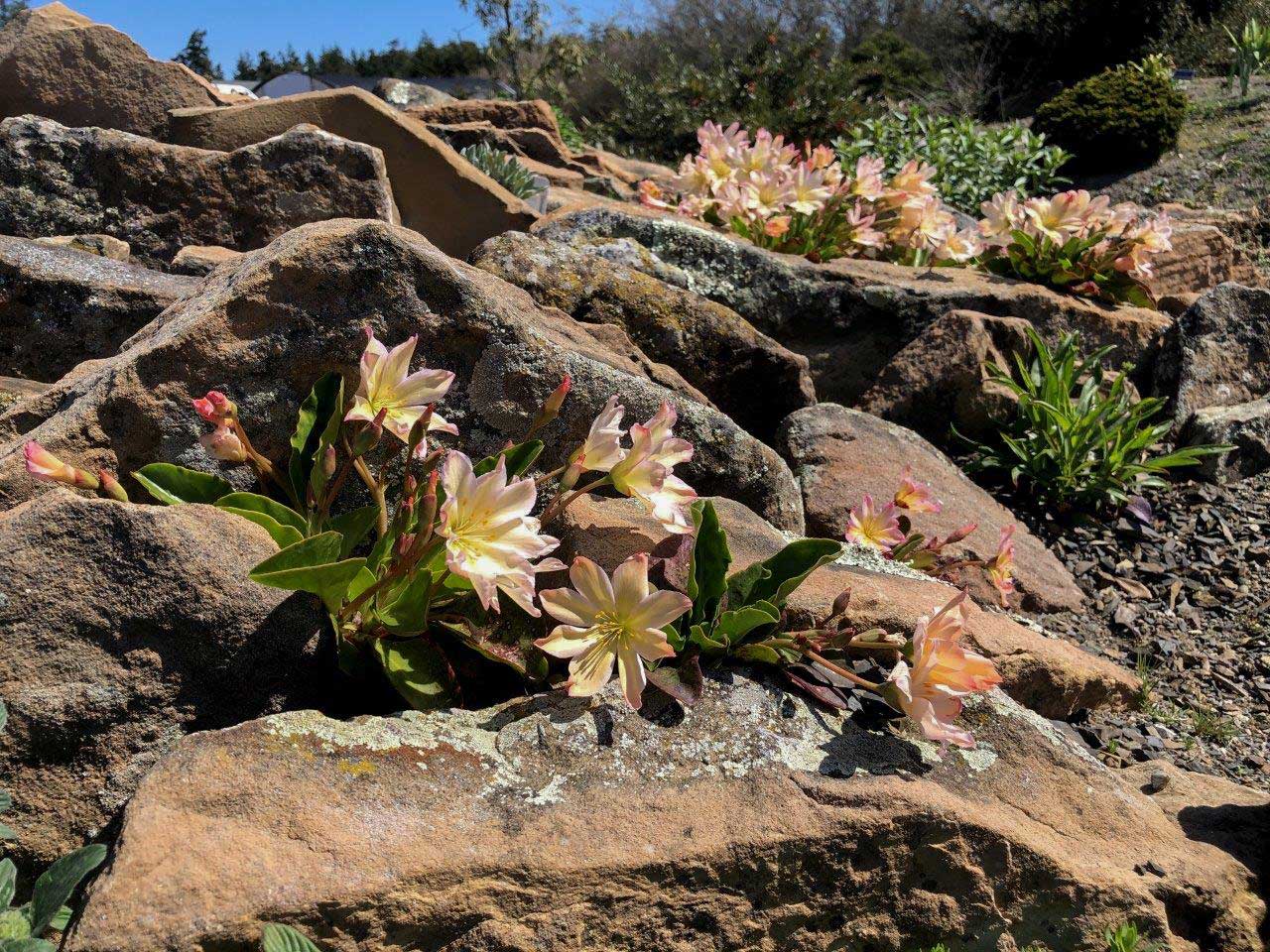
Lewisiopsis tweedyi
We spent a year trying to source-match stone to the original and finally got incredibly lucky. The catch was it had to be a full load on a 45’ semi. The New Life Church next door kindly let us unload the stone in their parking lot as our access can’t accommodate such a truck. We had rented a forklift to unload the truck, and our competent friend Al stopped in after work at the shipyard to shuttle the many heavy pallets of stone down the road to us.
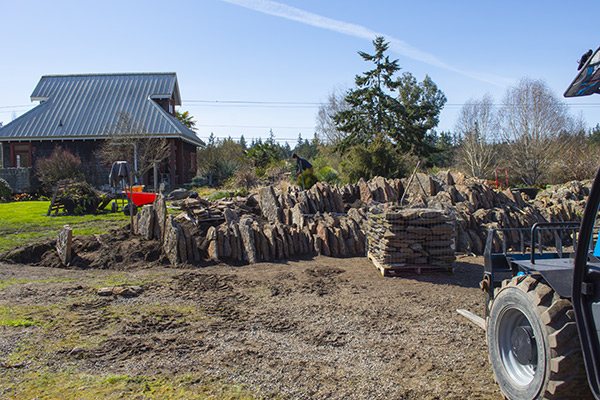 Covid prevented installation as Paul, Ty and Chris are in Canada and requirements were impractical. The stars aligned this spring, everyone’s schedules meshed, and the installation was scheduled first week of April. Al said, “Get an off-road forklift,” which we rented for a week - but what was expensive proved to be cheap as it enabled nearly 40 tons of rock to be installed. (Stream the documentary “Shipwrights on the Crane” from Port Townsend’s Rose Theatre to see Al in action).
Covid prevented installation as Paul, Ty and Chris are in Canada and requirements were impractical. The stars aligned this spring, everyone’s schedules meshed, and the installation was scheduled first week of April. Al said, “Get an off-road forklift,” which we rented for a week - but what was expensive proved to be cheap as it enabled nearly 40 tons of rock to be installed. (Stream the documentary “Shipwrights on the Crane” from Port Townsend’s Rose Theatre to see Al in action).
Watching these four stone artists assess the site and absorb our design considerations while working so incredibly well together was a joy. Watching what they created in less than 4 days felt like a rare privilege as they married the stone to the first garden, carrying those design concepts to another level. What they created is a beautiful sculpture which provides perfect growing conditions for some of the most challenging plants in the world. This will be an important conservation tool, educational pulpit, and an inspiration to public gardens and home gardeners who can recreate these conditions in any size, including containers.
We are so incredibly grateful that so many of you stepped up to fund the stone purchase, prep work, equipment rental, and bringing in the best crevice crew in the world to make this necessary crevice garden expansion possible. If this was pre-computer, the words would be smearing on the page from tears of gratitude.

Now the unappreciated work starts. Packing growing media into very deep crevices will take many hours of staff time. Finding matching, thin chinking stone for the vertical crevices along with appropriate gravel topping will be a challenge and will be something we have to find and gather ourselves. Sourcing plants, collecting seed and propagating plants will take literally years, although quite a number of plants in the FRBC collection are shouting, “Me! Me!”
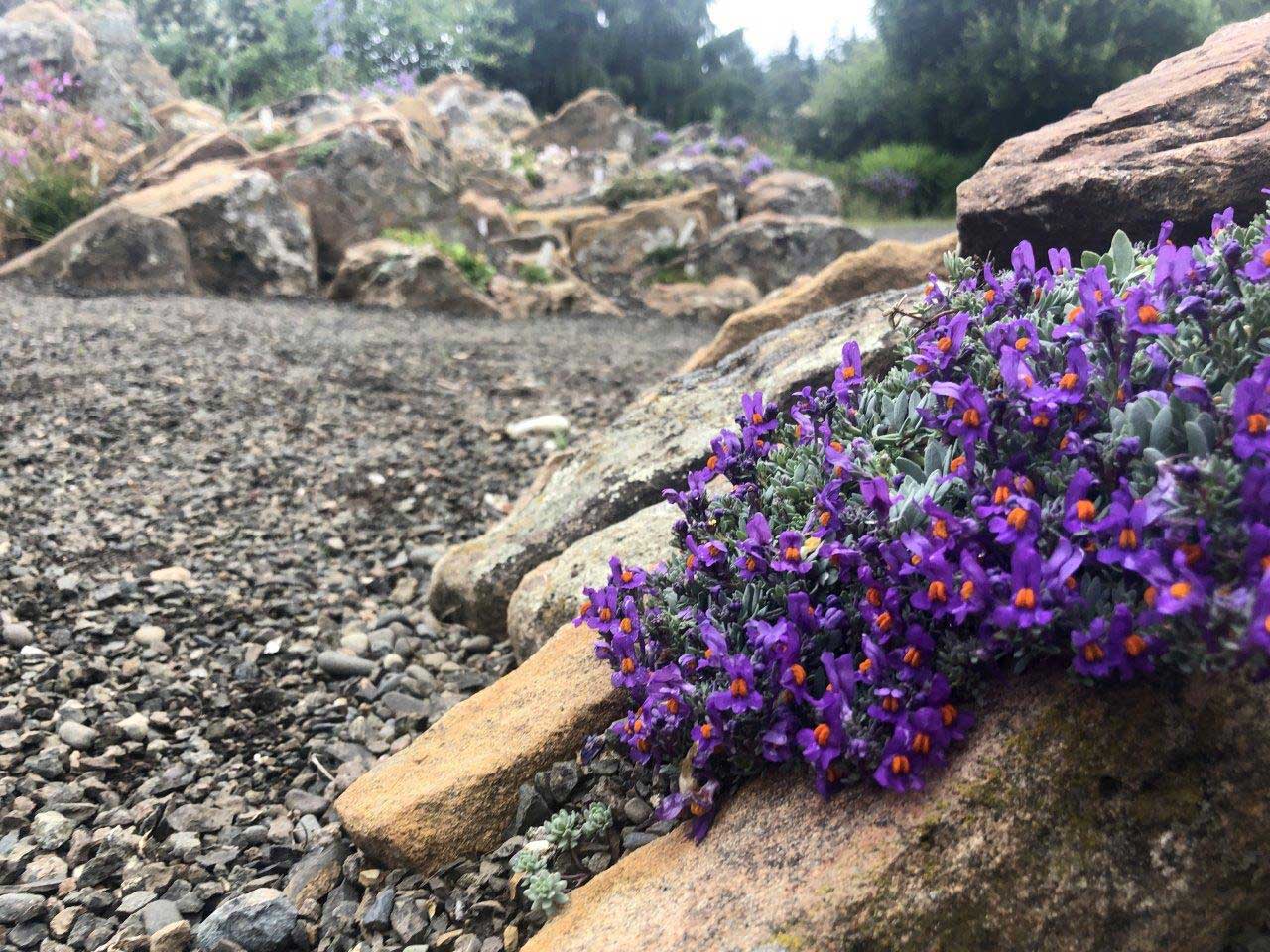
Linaria alpina
Paul told us these steps take at least twice as long as installing the stone and the expenses entailed are very real. Your financial help in making this happen would greatly accelerate this process, enabling this to become the world-class crevice garden that it is destined to be. We would be very happy to have FRBC members visit this garden by appointment (email: plants@farreachesbotanicalconservancy.org) and lay hands on what your support is providing.



